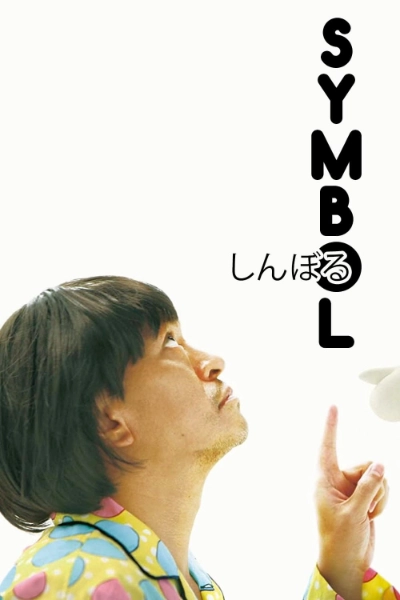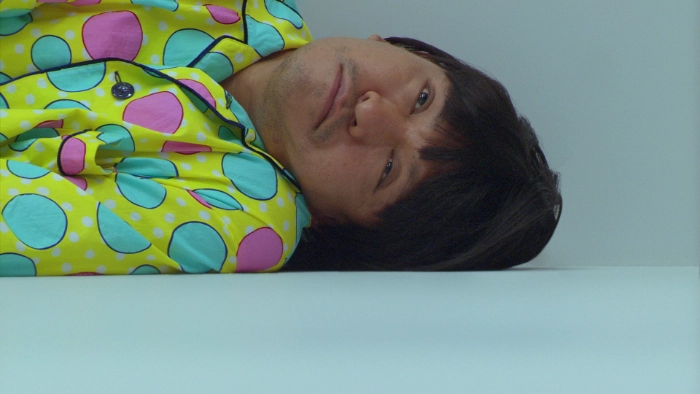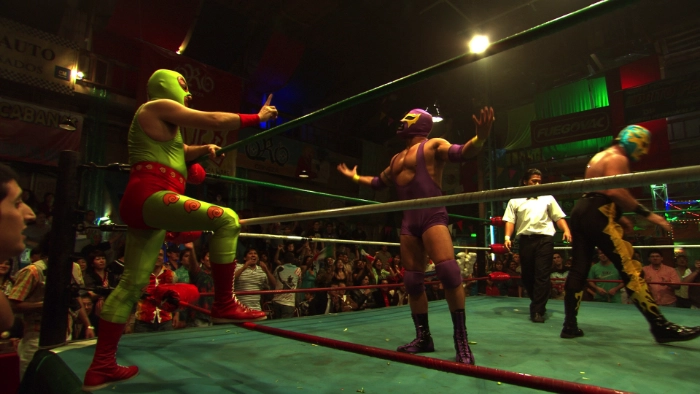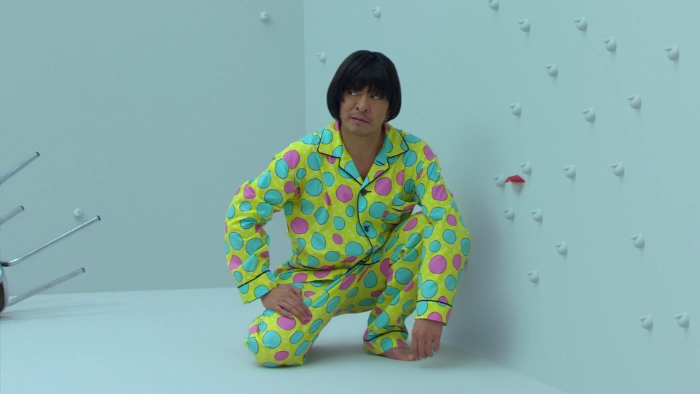Symbol film review

Intro
Hitoshi Matsumoto is a Japanese comedy legend most well known for his work in Gaki no Tsukai[1] and as the boke[2] of the comedy duo Downtown. His second film, Symbol, is definitely a weird one to say the least.
After finishing the movie, I shouldn’t have been surprised to learn that not only did Matsumoto star as the main character in the film, he also wrote and directed it himself.

Plot
Symbol has two separate storylines that seemingly have very little to do with each other. The film starts out in Mexico, where we follow the day of an middle-aged lucha libre[3] wrestler called Escargot Man and his family as they prepare for Escargot Man’s upcoming fight.

In the other storyline, the main character, simply called The Man, wakes up in a bare, white, room with the walls covered in thousands of little peculiar looking switches.
Pressing one of the switches, the protagonist learns that each of them do a different thing. One switch might give him a pair of chopsticks, another chucks a bonsai-tree at him. Each press results in escalating madness.

Without giving too much of the plot away, the storylines do eventually converge in an unexpected fashion.
Production and writing
The scenes in Mexico look quite good production-wise, despite suffering from the yellow and orange colour grading trope. The writing and acting is more based on realism and there’s an understated humor and wit to it. It reminds me a bit of Quentin Dupieux’s Rubber[4] The milieu in Mexico is run-down and grimy as we follow the family’s anxious preparations for the upcoming fight.
You can count the lines of dialogue with the fingers on your two hands and still have a few to spare, there isn’t a need for lengthy exchanges as the cinematography does most of the talking.

On the other hand, the scenes with Matsumoto in the white room are almost from an entirely different film. The colors are bright, light and pastel, the mood is almost sterile and clinical as we look at the main character trying to make sense of his surroundings. Almost like studing a lab rat.
The Matsumoto scenes are aided by CGI that isn’t looking too stellar by modern standards but if we consider that the film came out 15 years ago, I think it’s aged just fine. The film is easy on the eye in general.
Matsumoto’s character is very vocal and outspoken compared to his Mexican counterparts, despite being all alone in the room. He reacts loudly to his surroundings and his pleas and cries cannot be taken seriously at all. The delivery of every joke and beat is perfect. There’s just enough—but not too much—pause between the action and reaction and it’s obvious that there’s a comedy legend behind the movie.
I think the pacing of the movie works well. It’s not a super slow burner but it’s not filled to the brim with action either. Both storylines progresses and keep viewer engaged well enough. It’s definitely attempting to out-weird the viewer and much of its’ charm comes from the WTF factor of the events. But that’s how I like my movies anyways.
Final conclusions
Symbol isn’t a film I’d recommend to everyone, It’s definitely made for the acquired taste. On the other hand, if you enjoy the occasional juvenile joke, physical comedy and absurd and surreal films in general, Symbol is an excellent film in its’ genre.
I was thoroughly entertained and glad I ended up watching the movie.
- score
- 87 / 100
Notes
Team Gaki website with some subbed episodes to watch. ↩︎
In manzai comedy, a traditional Japanese form of stand-up comedy, the “boke” is the role of the funny man who makes foolish or absurd statements and actions, which are then corrected or criticized by the “tsukkomi,” the straight man. ↩︎
Lucha libre wrestlers, also known as luchadores, are Mexican professional wrestlers known for their high-flying maneuvers, colorful masks, and theatrical, acrobatic style of wrestling. ↩︎
Quentin Dupieux’s Rubber movie on IMDb https://www.imdb.com/title/tt1612774/ ↩︎